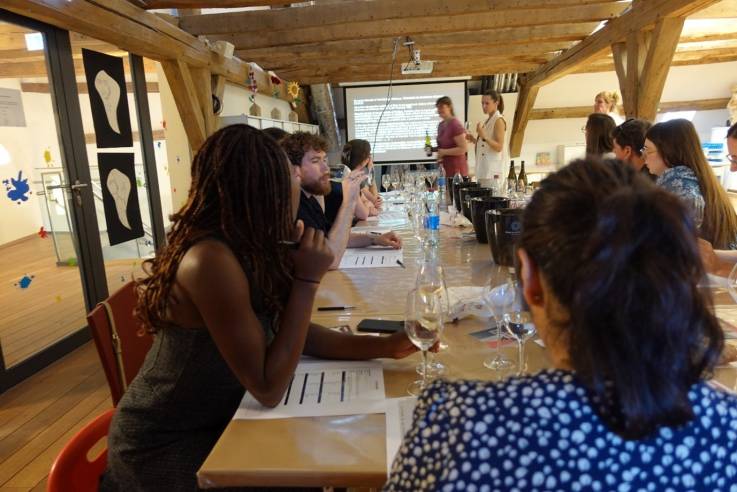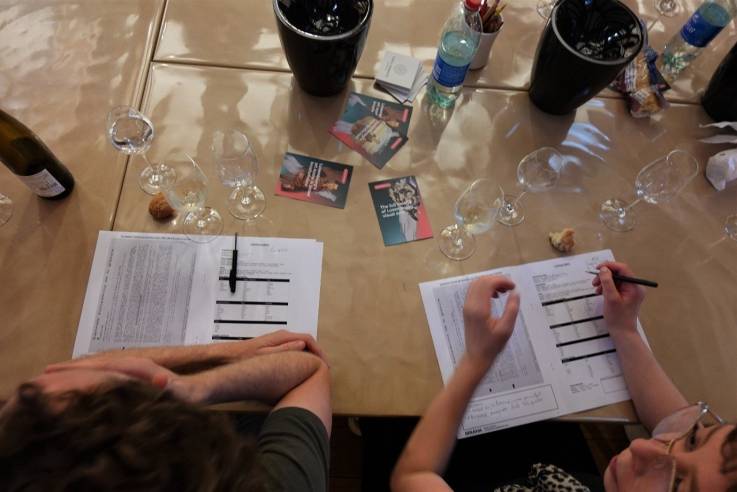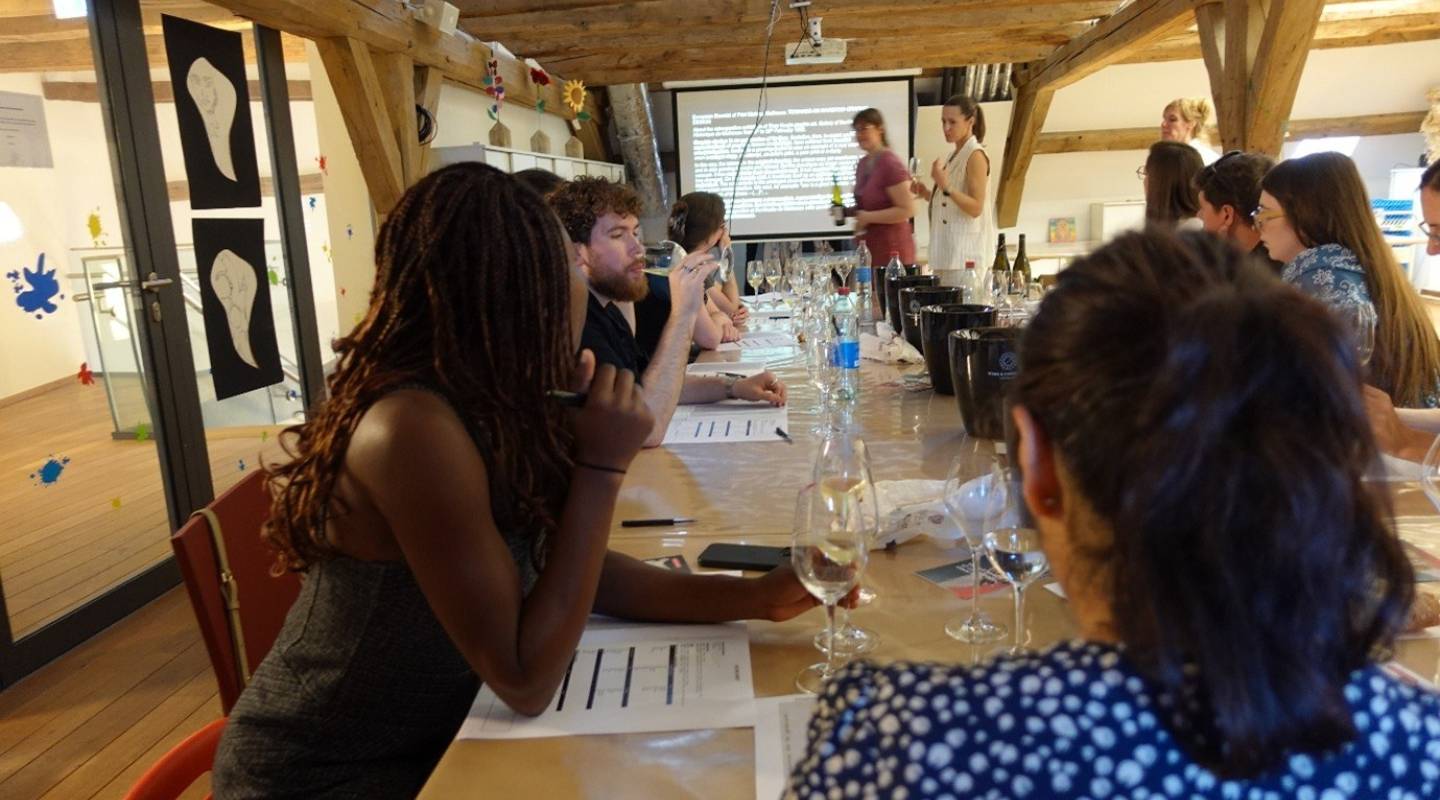In recent years, museums, archives and libraries have started to rethink their role in society. They‘re becoming more interactive, with programmes that are creative, hands-on and experimental.
As a result, these places have become social spaces, reaching different kinds of people and creating relaxed, enjoyable environments. The activities they offer help break boundaries and present opportunities for personal experiences and lasting memories. Museums aren’t just about objects anymore – they’re places where people can connect. That’s the idea behind our workshop Taste the Archive: A Wine Pairing Experience. We wanted to look at archival documents in a different way – not just as sources of information, but as something that can convey emotions and spark personal connections. Organised as part of the Archive Month, hosted each year by the Veräin vun de Lëtzebuerger Archivisten (VLA), the event invited people to respond to the stories and voices found in the archives. Wine, itself a piece of cultural heritage, felt like the perfect match.
What do archives taste like?
We had a clear idea in mind: to create a fully curated pairing of archival documents and wine. The idea was to invite people to explore the Lëtzebuerger Konschtarchiv and the MNAHA’s archival collections in a new way. Can taste and smell help us feel what artists felt – and maybe even change how we read and experience their work? To find out, we teamed up with Doris Goethert, an experienced wine expert from the Institut Viti-Vinicole. Together, we created pairings based on different ideas: some played with colour, others drew links between the lives of artists and winemakers, and some were inspired by the emotions in poems or exhibition documents.

When wine meets memory
What stood out during the workshop was how openly people talked about their feelings and actively engaged with the archival and oenological heritage. The group created a space where it felt natural to share emotions – even with strangers. No matter their age or background, participants connected with each other in a way that felt easy and genuine.
One fun part of the pairing was how it sparked people’s imagination. When a red wine at room temperature was paired with a poem, many participants pictured the poet’s home – soft curtains, rugs, wooden floors and a warm, familiar feeling. They talked about the close bond the poet must have had with his childhood home and his mother. But when the same poem was paired with a chilled white wine, their focus shifted. Suddenly, they noticed different things – like the poet’s journey back home, a sense of movement but also the sour note of losing his mother. After the workshop, it was interesting to hear two participants who had never met before deep in conversation about what “home” means and what it’s like to lose someone close, all sparked by the poem and the wine pairing.
There was also a moment of shared understanding when Doris Goethert paired a letter with a wine, based on similarities between the lives of an artist and a winemaker. The letter highlighted his urge to become a full-time artist, even though it meant taking risks and going against expectations. The wine came from a young winemaker who had made a similar choice – breaking with tradition to make his own wine instead of selling grapes to a cooperative. This sparked a group conversation about life choices, norms and what it means to take a leap.

The affective archive
It was a first worth taking. Above all, the participants created a powerful moment where personal stories and feelings took centre stage. People felt comfortable being open, and that openness became a way to connect – with each other, with the art and wine and with the past and present. Our approach ties in with the idea of the affective archive, a concept explored in The Lexicon for an Affective Archive and in Alethea Helbig’s In Theory: Memory as an Affective Archive. Helbig talks about memory as something we experience with all our senses – not just through reading or looking, but through feeling. That’s exactly what we aimed for in the workshop: helping people connect with heritage in a way that’s emotional, sensory and memorable.
Text & Photos: Jamie Armstrong
Source: MuseoMag N° IV - 2025
